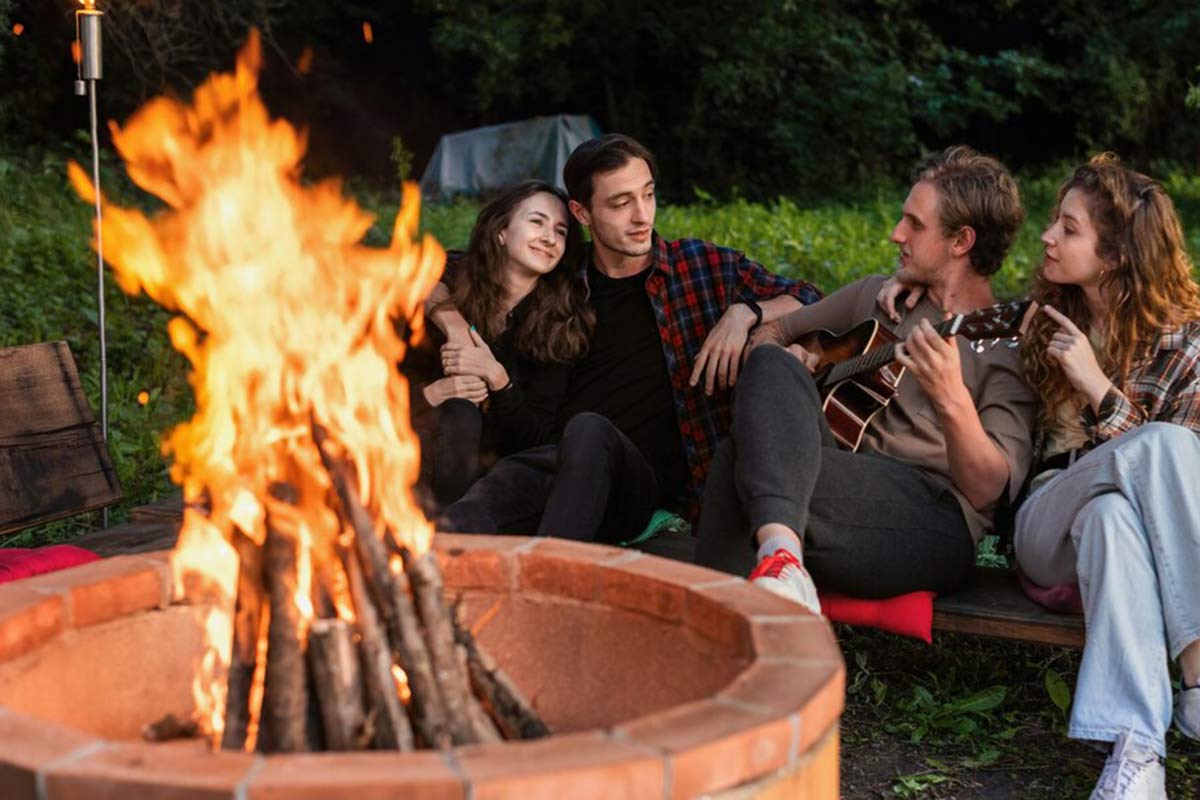Fire pits have become increasingly popular in recent years, adding a warm and inviting ambiance to outdoor gatherings. Whether you’re roasting marshmallows with friends or enjoying a cozy evening under the stars, a fire pit can enhance the overall experience.
However, if you’re considering placing a fire pit on grass, you may have some concerns about its safety and potential effects on your lawn.
In this article, we will explore the topic in-depth and provide you with all the information you need to make an informed decision.
The Appeal of Fire Pits
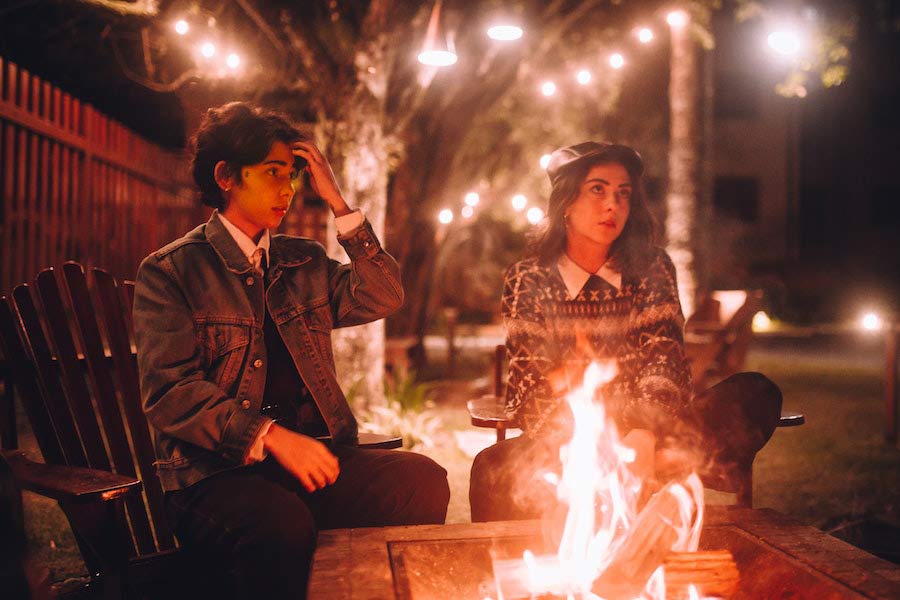
Fire pits offer a captivating ambiance that creates a warm and inviting atmosphere for relaxation. They bring people together, fostering socialization and entertainment. With the ability to extend the outdoor season, fire pits provide warmth and comfort during cooler evenings.
They also serve as versatile cooking sources, adding flavor and fun to outdoor culinary experiences. Available in various designs, fire pits can be customized, and hide propane tanks to match any style preference.
Additionally, fire pits can add value to properties and establish a connection with nature. Overall, fire pits enhance outdoor spaces and create memorable moments throughout the year.
Understanding Fire Pits
Before we delve into the specifics of placing fire pits on grass backyard, let’s briefly understand what fire pits are and how they function. A fire pit is a designated area designed to contain and manage an open fire.
It can be made of various materials, including stone, metal, or concrete, and can accommodate different fuel sources such as wood, propane, natural gas or other fuels.
Fire pits come in various shapes and sizes, from traditional round or square designs to more modern and sleek options.
Can You Put a Fire Pit on Grass?
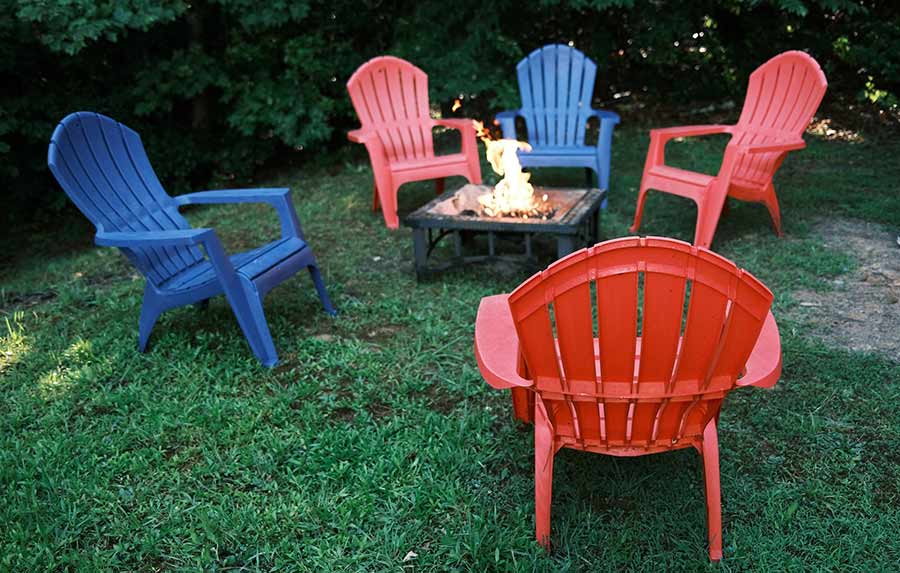
Now, let’s address an important aspect of the burning question: Can you put a fire pit on grass? The short answer is yes, you can put a fire pit on grass. However, there are important considerations and safety measures that need to be taken into account like fire pit unattended to ensure burning fire is a safe and enjoyable experience.
Safety Considerations
Safety should always be your top priority when using fire pits, especially when placing them on grass. Here are a few key safety considerations to keep in mind:
- Fire Safety: Before placing a fire pit on grass, familiarize yourself with local fire regulations and restrictions. Some areas may have specific rules regarding open flames or fire pit usage. It’s essential to comply with these regulations to prevent accidents and potential fines.
- Clearance: Maintain a safe distance between the fire pit and any flammable objects such as dry grass, trees, shrubs, or buildings. The general recommendation is to have at least 10 feet of clearance around the fire pit. This not only minimizes the risk to catch fire but also ensures better ventilation for the burning fire.
- Stability: Ensure that your fire bowl is stable and secure with heat shield on the grass. Choose a level surface and avoid placing it on uneven or sloping terrain. This helps prevent accidents and keeps the fire pit from tipping over.
Fire Pit Placement Tips
When selecting the ideal location for a fire bowl on grass, there are a few important considerations to keep in mind. Look for a spot that is away from flammable objects such as trees, shrubs, or nearby structures to minimize the risk of fire spreading.
Adequate ventilation is crucial, so choose an open area that allows for proper airflow around the fire pit. Additionally, be sure to check local regulations and permits to ensure compliance with any specific rules or restrictions in your area.
Finally, consider the prevailing wind direction and position the fire pit heat shield in a way that prevents smoke from blowing directly into seating areas or neighboring properties.
Preparing the Grass
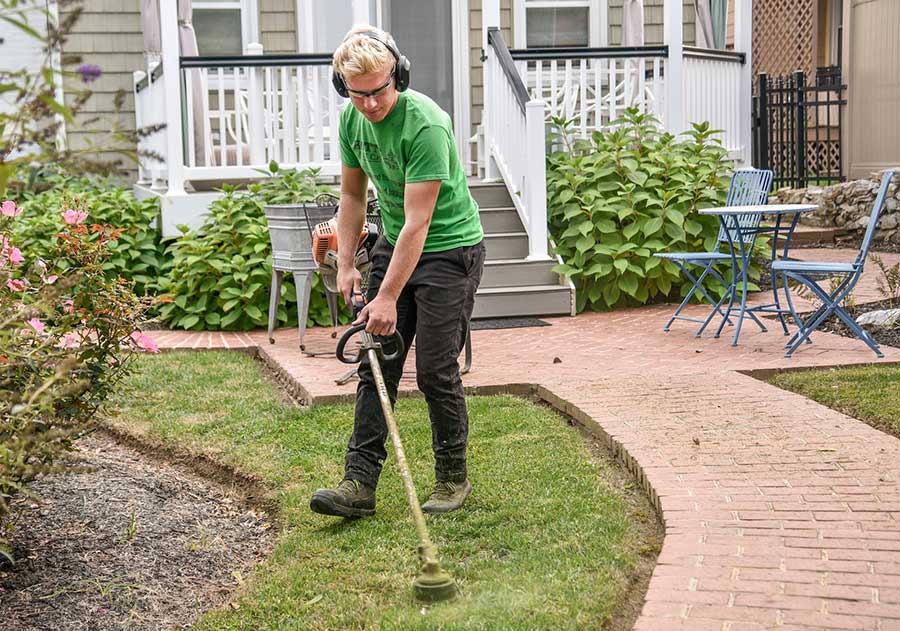
Before placing a fire pit on grass, it’s necessary to prepare the area to minimize potential damage. Start by trimming the grass in the designated fire pit space, keeping it short to reduce fire hazards.
Clear the area of any debris or flammable materials to create a safe environment. To provide an added layer of protection, consider digging a shallow fire pit pad, and lining it with fire-resistant materials like rocks or bricks.
Prior to using the fire bowl, thoroughly water the grass in and around the designated area to help prevent fire and reduce heat damage.
Fire Pit Base Options
To protect the grass beneath the fire pit and ensure stability, several materials can be used as a base. Heat-resistant brick pavers or, fire-resistant bricks, sand, and gravel or crushed rock are commonly used options.
Heat-resistant pavers and fire-resistant bricks act as barriers, preventing direct contact between the fire and the grass. Sand helps distribute heat stress evenly and reduces the risk of scorching the grass.
Gravel or crushed rock provides stability, proper drainage, and prevents grass compaction. Choose a base material that is large enough to accommodate the fire pit’s size and extends beyond its perimeter to protect grass.
Using Fire Pit Mats
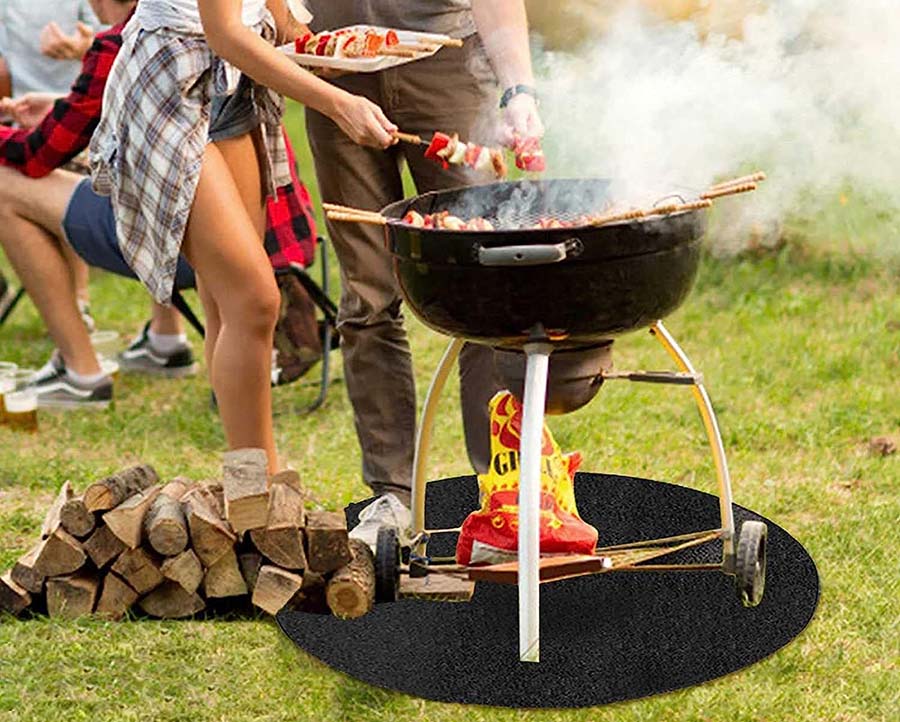
A fire pit mat is a valuable accessory that protects the grass underneath the fire pit. Made from heat-resistant materials, they act as a barrier, preventing direct contact and protecting grass from extreme heat, and potential damage. Fire-resistant mat is available in various shapes and sizes to accommodate different fire pit designs.
They enhance safety, particularly in dry or windy conditions, by minimizing the risk of accidental fire spread. Fire pit mats are easy to install and remove, providing convenience for occasional or regular use.
Always follow the manufacturer’s instructions when using fire pit mats and inspect them regularly for any signs of wear or damage.
Portable Fire Pits for Grass
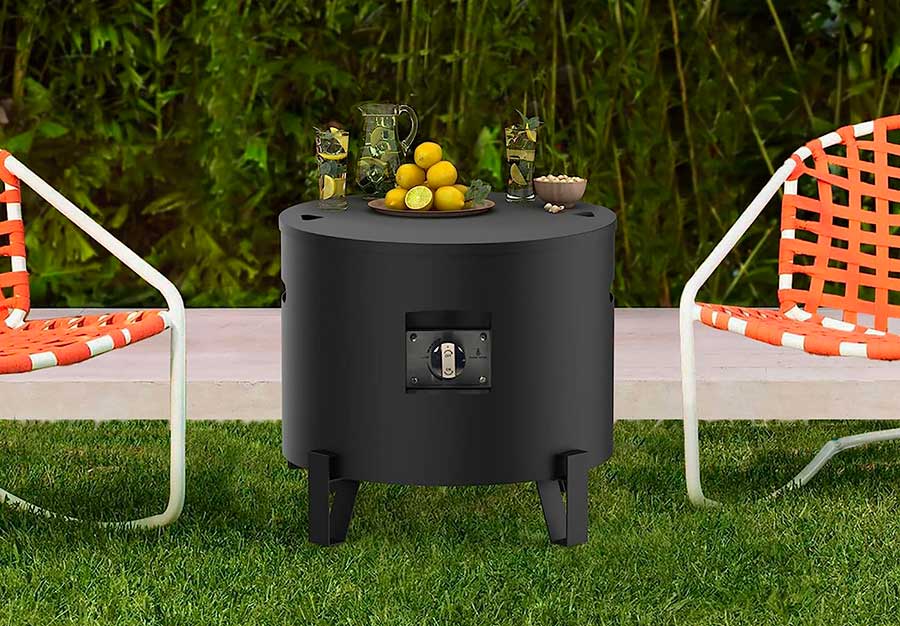
Portable fire pits offer several advantages and are well-suited for use on grass surfaces. Their mobility allows for flexibility in placement, making it easy to position them on the grass and move them as needed.
Usually, portable fire pit often come with it’s own base or stand, providing additional protection for the grass underneath. These fire pits are typically designed to minimize heat transfer to the ground, reducing the risk of damage to the grass.
They are available in various sizes and styles, offering heat shields versatility and catering to different preferences. Portable fire pits provide a convenient option for those who want to enjoy the benefits of a fire pit on grass while maintaining the flexibility to relocate or store the fire pit when not in use.
Ensuring Proper Ventilation
Proper ventilation is crucial when using a fire pit on grass. It is essential to ensure adequate airflow around the fire pit to maintain a consistent flame and minimize smoke accumulation.
Placing the fire pit in an open area of the yard, away from obstructions, helps promote proper ventilation. Be mindful of wind direction and avoid placing seating areas directly in the path of smoke.
Adequate ventilation not only enhances the fire pit experience but also reduces the impact of smoke on both the surrounding lawn area and those gathered around the two raised fire pits.
Fire Pit Maintenance
Regular maintenance is key to keeping your fire pit in optimal condition, especially when it is placed on grass. Here are some tips for maintaining and caring for your fire pit:
- Cleaning: Regularly vacuum the fire pit to remove ash, debris, and any leftover wood or fuel. Dispose of the ash safely, ensuring it is fully cooled before discarding.
- Inspecting for Damage: Periodically inspect your fire pit damage, such as loose parts, cracks, or rust. Address any significant issues promptly to ensure the safety and longevity of the fire pit.
- Protecting the Grass: To protect the grass underneath the fire pit, consider using a heat-resistant barrier, such as a fire pit mat or heat-resistant pavers. These materials create a protective layer and minimize direct contact between the fire pit and the grass.
- Covering the Fire Pit: When the fire pit is not in use, consider covering it with a protective cover designed for your specific model. This helps shield it from the elements, preventing rusting and extending its lifespan.
- Regular Maintenance Checks: Conduct routine maintenance checks to ensure all components of the fire pit are functioning correctly. This includes inspecting the fuel source, ignition system (if applicable), and any accessories or attachments.
By following these fire starter maintenance tips, you can ensure that your fire pit remains in good condition and continues to provide a safe and enjoyable experience on your grassy surface.
Alternative Options
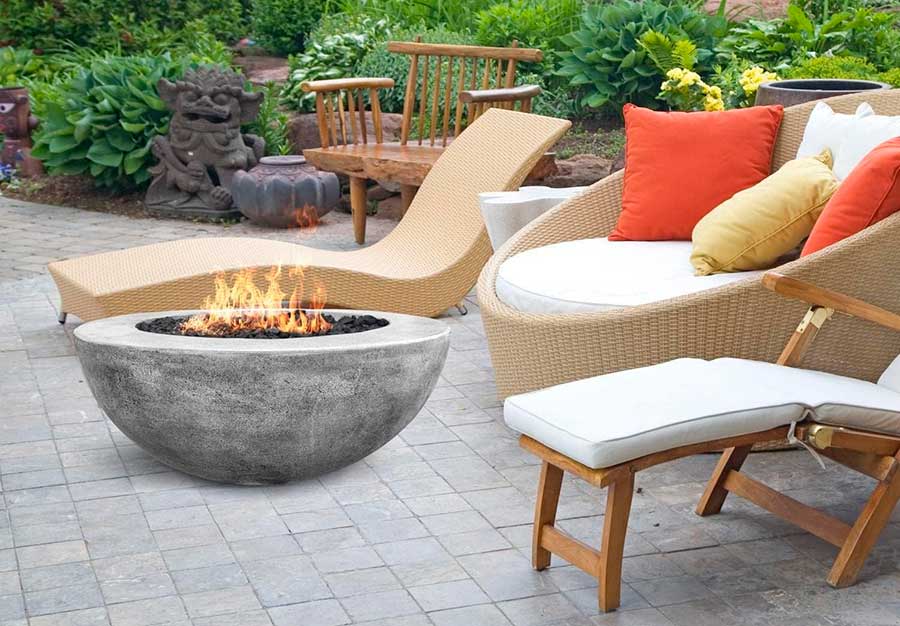
If you have concerns about placing a fire pit directly on grass, there are alternative options to consider:
Fire Pit Tables
Fire pit tables combine the functionality of a fire pit with a stylish tabletop. These units are designed to be placed on a stable surface, such as a patio or deck, rather than directly on grass.
Chimineas
Chimineas are freestanding, portable fireplaces with a chimney-like structure. Made of materials like clay or cast iron, they provide a contained fire experience and are generally safe to use on grass surfaces.
Fire Bowls or Fire Columns
Fire bowl and stainless steel fire pit column offer a compact lawn safe and decorative alternative to traditional fire pits. These units can be placed on a stable surface like a patio or concrete pad and provide a contained fire experience.
Consider these alternative options if you prefer not to place a fire pit directly on grass or if you are looking for different styles or functionalities to suit your outdoor space.
Legal Considerations
Before using a fire pit on grass, it’s essential to be aware of any legal restrictions or permits required in your area.
Local jurisdictions or homeowners’ associations may have specific regulations regarding open flames or fire pit usage. Familiarize yourself with these regulations to ensure compliance and prevent any potential fines or penalties.
Additionally, check if any permits are required for using pit on the grass in your specific location.
Being aware of the legal considerations helps ensure a safe and lawful use of your fire pit on the grass.
Conclusion
In conclusion, placing a fire pit on grass can be done safely by following guidelines and precautions. Consider regulations, clearance, stability, and protective measures like elevated fire pit, fire pit heat shields, and fire-resistant mats.
Portable fire pits offer convenience, and proper ventilation is crucial. Regular maintenance and alternative options can enhance the experience and protect the grass.
Be mindful of dead grass and take necessary steps to protect the grass. Adhere to safety precautions, have a fire extinguisher nearby, and be mindful of the intense heat generated by the fire pit.
By following these measures, you can enjoy a safe and enjoyable fire pit experience on grass while ensuring the health and appearance of your lawn.

